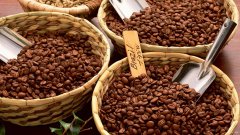Thai iced coffee | if you make a cold cup of Thai Gufa iced coffee

For professional baristas, please follow the coffee workshop (Wechat official account cafe_style)
A cup of Thai iced coffee made by mixing very strong coffee with ice cubes and adding cardamom, a spice native to the East Indies, with cream and sugar, takes you to Phuket in the hot sun and sea breeze in an instant. If there is one coffee that can bring you a cool sea breeze and the ancient psychedelic aroma of Asia on a hot summer day, it is Thai iced coffee.
Thais love coffee, and when you pass by some cafes or small beverage shops, you will see some brown and black pots and gauze, which are the utensils used to make ancient Thai coffee. Thai antique coffee has been popular in Thailand for decades with its peculiar way of brewing. Today, let's approach the Thai antique coffee bar.
A brief History of Thai Coffee
Coffee began to enter human life in the 14th century, and its name comes from the loanwords produced by the word Coffee in England, including Chinese. Thailand began to formally know coffee around the beginning of the 19th century. Although Thailand came into contact with coffee relatively late, it is a country that loves coffee!
The first coffee tree entered Thailand in 1824, but it was planted inside the palace, so it could not be seen by ordinary people, let alone drink, although there were mobile businessmen who brought a small amount of coffee into the Thai market at that time. But at that time, ordinary people did not know coffee.
Later, in 1904, "Robusta" (coffee beans that can be grown at low latitudes) officially entered Thailand, and a businessman (Mr.Ti-Moon) introduced coffee and planted it in Slongklar. It was also the first time that Thai people met with coffee. Because coffee had not yet been named in Thailand at that time, people also called it Coffee, but it became Ka-Fare because of its accent. Finally, it was called like this. At that time, there was a book that said, "the seeds of young trees from abroad from KaFare- are soaked in hot water as tea."
Thailand became an exporter of coffee in 1976, selling an average of 850 tons of Robusta a year on the international market.
When the cost of coffee rose in 1980, the Thai government did not give up coffee as a cash crop, or continued to support farmers to develop Robusta, and then Thailand continued to export more coffee.
In 1987, coffee became a ubiquitous drink in Thailand, but the total amount of coffee consumed by Thais was not as much as expected. At that time, Thais drank only 500 grams of coffee per person per year on average. After Thailand had the first instant coffee produced by Nestl é in 1988, it thoroughly solved the two major problems in the Thai (Asian) market at that time. First, Thais do not like to grind their own coffee and then make coffee, and second, coffee shops are too expensive for Thai blue-collar workers at that time.
Then canned coffee began to appear and became very popular because it was cheap, easy to get and easy to drink.
Starbucks is not the most popular coffee shop in Thailand because its coffee price is high but not as rich as that of other stores. People usually go to Starbucks because of its comfortable decoration rather than coffee.
Thai coffee usually does not use syrup like Starbucks. Many Thai coffee uses condensed milk. When it comes to condensed milk, Thais are users. Many desserts have to add condensed milk and even coffee. Condensed milk is used instead of sugar and cream. The taste becomes very rich.
What's the difference between antique coffee and freshly ground coffee?
This question is difficult even for the person who makes it, but according to experience, the two kinds of coffee are made of coffee beans, but the taste is very different.
The coffee beans used in ancient coffee are added to the coffee beans with almost charred concentrated sugar water, stirred fully, removed and dried, and then ground into powder when used, becoming the so-called ancient coffee packaged in bags in the coffee shops we see or taste now.
At first, I thought that antique coffee was made by those "ancestors" who sold coffee decades ago. In fact, "archaic" refers to a way of brewing coffee, which is different from the classic way of brewing freshly ground coffee: freshly ground coffee roasts beans, grinds them and brews them, while antique coffee is not. In addition, the concentration and color of coffee are also different. Many ancient coffee makers are famous for their blending methods and brewing methods, and these different ways of making coffee are the characteristics of ancient coffee.
Now let's take a look at the unique brewing method of Thai antique coffee.
The practice of Thai iced coffee (modern version)
Take a 350ml-sized glass, fill it with ice and flatten the rim.
Use a coffee machine to extract 75ml espresso. Those without a coffee machine can be extracted in a mocha pot, then add a spoonful of condensed milk to stir well. (spoons are stainless steel spoons used for eating at home.)
Pour condensed milk espresso into a cup filled with ice and stir it with a spoon.
Measure the black and white milk of 75ml, pour it into a cup and stir well. (after the black and white milk is poured into the cup, it is about 2-3cm away from the cup mouth.)
Then you can enjoy it. Condensed milk is the favorite coffee ingredient in Southeast Asia. The coffee is full of milk, and the ice cubes won't be too sweet and greasy. It's a good summer drink.
Important Notice :
前街咖啡 FrontStreet Coffee has moved to new addredd:
FrontStreet Coffee Address: 315,Donghua East Road,GuangZhou
Tel:020 38364473
- Prev

Matcha Coffee | what on earth made matcha so popular?!
Professional baristas Please follow the Coffee Workshop (Wechat official account cafe_style) Holy Matcha, a matcha-themed cafe, has become a mecca for girls on the west coast of the United States since it opened in San Diego for only two months. Boss Geraldine Ridaura came into contact with matcha on a trip to Japan and was immediately impressed by its magical health benefits.
- Next

Drip method | demonstration of hand-made coffee with kono filter cup
Professional baristas Please pay attention to Coffee Workshop (Wechat official account cafe_style) Deep Baking Mantenin 15g KALITA Copper Pot KONO 01 filter Cup steaming time 247s Mr. Kono, president of coffee filter cup and coffee pot, has studied delicious coffee for many years, and has designed a series of coffee pots full of pastoral KONO coffee filter cups and log handles. KONO is all coffee in Japan.
Related
- Beginners will see the "Coffee pull flower" guide!
- What is the difference between ice blog purified milk and ordinary milk coffee?
- Why is the Philippines the largest producer of crops in Liberia?
- For coffee extraction, should the fine powder be retained?
- How does extracted espresso fill pressed powder? How much strength does it take to press the powder?
- How to make jasmine cold extract coffee? Is the jasmine + latte good?
- Will this little toy really make the coffee taste better? How does Lily Drip affect coffee extraction?
- Will the action of slapping the filter cup also affect coffee extraction?
- What's the difference between powder-to-water ratio and powder-to-liquid ratio?
- What is the Ethiopian local species? What does it have to do with Heirloom native species?

